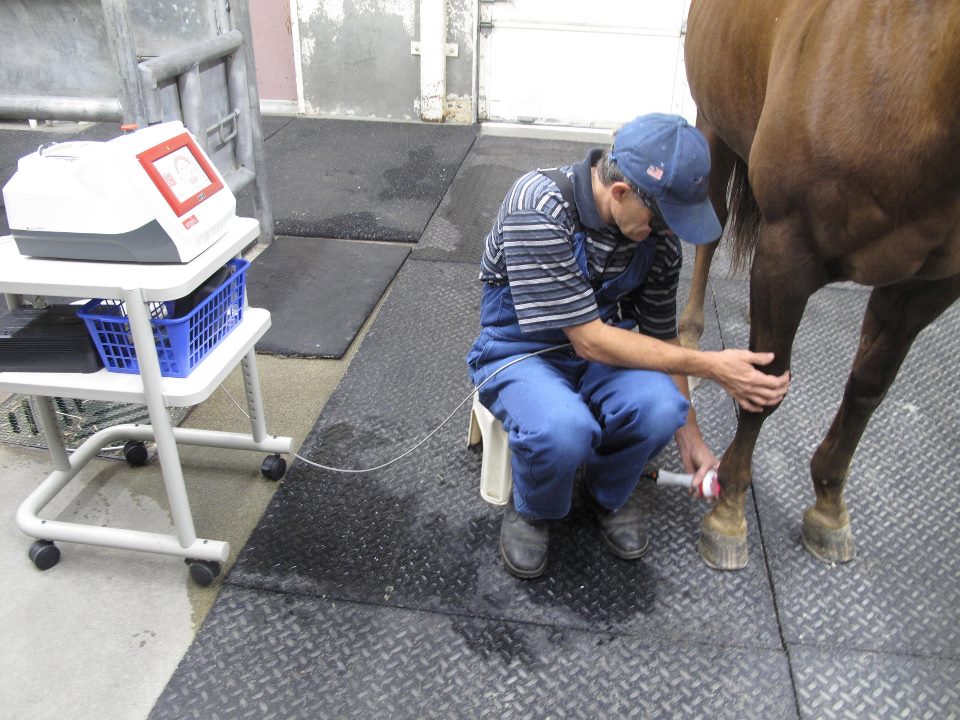The Power of Equine Therapy for Anxiousness, PTSD, and Emotional Healing
The Power of Equine Therapy for Anxiousness, PTSD, and Emotional Healing
Blog Article
Reviewing the Performance of Laser Treatment in Equine Therapy for Injury Rehab
The examination of laser therapy's performance in equine injury rehab rests on several factors, consisting of recovery time, discomfort mitigation, and cells regrowth. Scientific research studies recommend notable enhancements in conditions like tendonitis and osteoarthritis, credited to boosted mobile function and raised ATP production. Veterinarians frequently observe superior end results with laser treatment compared to traditional techniques, positioning it as a crucial aspect in equine care. However, the need for constant surveillance and customized therapy plans can not be overstated. What particular medical evidence supports these cases, and just how do veterinarians apply these protocols in technique?

Understanding Laser Therapy
Laser treatment has actually ended up being a pivotal tool in veterinary medicine, specifically in the therapy of equine conditions. Recognized for its non-invasive nature and effectiveness, laser treatment involves the application of details wavelengths of light to promote cells repair work and minimize inflammation. This therapeutic technique is increasingly preferred for its capacity to speed up the healing procedure in steeds experiencing a selection of bone and joint injuries and persistent conditions.
The main mechanism behind laser therapy is its capability to enhance cellular features. When laser light passes through the skin, it is soaked up by mitochondria, the powerhouse of cells, which results in enhanced manufacturing of adenosine triphosphate (ATP) This biochemical power increase helps with mobile repair service and regeneration. Furthermore, laser therapy promotes vasodilation, enhancing blood flow and oxygen distribution to damaged tissues, thus accelerating healing.
In equine medication, laser treatment is specifically helpful for problems such as tendonitis, osteo arthritis, and wound healing. The technique is lauded for its pain-relieving residential or commercial properties, enabling horses to regain mobility and function extra swiftly. Veterinarians additionally value its marginal side impacts contrasted to other therapy methods, making it a trusted and secure option for equine treatment.
How Laser Therapy Works
To recognize how laser treatment functions, it is necessary to explore the communication between light energy and organic tissues. Laser treatment, also recognized as Low-Level Laser Therapy (LLLT) or photobiomodulation, employs certain wavelengths of light to penetrate tissues and promote cellular procedures. The system depends upon the absorption of photons by cell chromophores, primarily within the mitochondria, which are important for power production.
Upon absorption, these photons set off a series of biochemical modifications, enhancing mitochondrial function and resulting in enhanced adenosine triphosphate (ATP) manufacturing. This increase in ATP accelerates mobile metabolic process, promoting tissue repair service and regrowth. Additionally, laser therapy modulates inflammatory feedbacks by affecting cytokine levels and lowering oxidative stress, thereby relieving discomfort and swelling.
An additional considerable element of laser treatment is its duty in boosting microcirculation. The treatment advertises vasodilation, boosting blood circulation and oxygen shipment to broken tissues. This helps with the removal of mobile debris and sustains the proliferation of fibroblasts and collagen synthesis, critical for wound recovery.
Professional Evidence
The efficacy of laser treatment in equine treatment has been substantiated through various professional studies, showcasing its therapeutic possible across an array of problems. A study performed by Turner et al. (2012) demonstrated that steeds treated with low-level laser treatment (LLLT) for ligament injuries exhibited sped up recovery compared to those obtaining standard treatments.
Similarly, research by Johnson and associates (2015) concentrated on equine muscular tissue injuries, exposing that laser check these guys out therapy substantially expedited muscle mass fiber regrowth and decreased muscular tissue stiffness. These findings were affirmed by histological analyses revealing better muscle cells company. In addition, professional analyses have revealed that laser therapy can minimize persistent problems such as osteoarthritis. A research study by Smith et al. (2018) reported that equines with osteoarthritic joints experienced remarkable discomfort relief and enhanced range of movement complying with a regimen of laser treatment sessions.
Vet Insights
Vet specialists have actually significantly identified the worth of laser therapy in equine therapy, mentioning both empirical evidence and firsthand experience. Dr. Jane Smith, a leading equine vet, keeps in mind that laser therapy has shown impressive efficacy in reducing inflammation and accelerating cells repair.
Veterinarians likewise value the convenience of laser treatment. visit She points out that laser treatment can be tailored to the particular needs of each horse, making sure optimum end results.

Practical Factors To Consider
An essential aspect of executing laser treatment in equine therapy entails comprehending the useful considerations that ensure its efficiency and safety and security. Primarily, it is crucial to pick the ideal laser gadget, as various kinds vary in wavelength, power, and infiltration depth. Vets should be fluent in these specifications to customize therapy procedures successfully to every injury kind
Furthermore, the frequency and duration of laser treatment sessions require careful planning to maximize healing benefits while lessening any possible unfavorable impacts. Regular surveillance of check this site out the horse's response to therapy can direct needed adjustments in the treatment regimen. Establishing a risk-free and controlled environment during treatments is also vital to prevent unintentional direct exposure to laser discharges, which can damage both the equine and the trainer.
Educating and qualification of employees carrying out laser therapy are critical to make certain correct technique and to promote security criteria. In addition, preserving exact documents of each session, including laser settings and observed outcomes, is crucial for reviewing the total performance of the treatment and for making data-driven decisions.
Verdict
Laser therapy has actually arised as an efficient technique in equine injury rehabilitation, using substantial benefits in recovery time, discomfort relief, and cells healing. Scientific studies underscore considerable enhancements in conditions such as tendonitis and osteo arthritis, credited to enhanced cellular feature and enhanced ATP manufacturing. Veterinarian observations affirm these findings, highlighting superior outcomes compared to conventional treatments. For optimum outcomes, constant monitoring and customized therapy protocols stay important in leveraging the complete capacity of laser treatment in equine treatment.
Report this page